The core tip of "skimming" paintings is divided into four categories:
1. Return to the front: refers to the lower end of the stroke pointing upward. The writing method is to put down the pen slightly heavier, then write the stroke downward and to the left, and then return to the front and close the stroke upward when the stroke ends. Because it is not a matter of taking the lead and closing the pen.
2. Picking the foot to write: refers to writing with the lower end of the painting and raising the foot upward. The writing method is the same as returning to the front, except that when the pen is closed, the foot is raised to make a hook shape. Generally speaking, when writing back to the front, it is usually written vertically with the stroke behind, and the angle of the stroke is small.
3. Slant and slant: The writing method is to put down the pen slightly heavier, and then gradually lift the pen to the left and lower. The stroke should be light and flexible without hesitation, and the force should be sent to the tip of the stroke.
4. Flat writing: The writing method is to put down the pen firmly, pause briefly, and then lift the pen and write quickly. The flat shape is a bit like a bird peck, short and sharp.
Example word analysis
1. "melon"
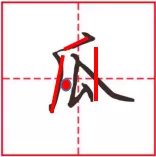
1. Start the pen with a short stroke and pause the pen lightly;
2. Sketch and write longer;
3. Sketch and return the hook with an arc;
4. Vertical paintings should be tilted;
5. Dot paintings should be written in small letters;
6. Release the stroke and make it slightly flat when closing the brush.
2. "hill"
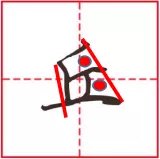
1. Start writing and start writing lightly;
2. The slope of the drawing is slightly larger;
3. Vertical paintings tilt inward;
4. There must be curvature in both horizontal and vertical drawings;
5. The last horizontal line is the longest;
6. For long horizontal strokes, draw back the pen and draw the hook.
3. "Hu"
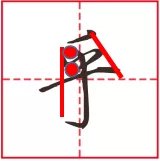
1. Short and slightly flat;
2. The left point is smaller, the right point is larger, and they are connected;
3. The middle horizontal drawing is the longest and slightly curved;
4. The starting stroke and short stroke of vertical painting are not connected;
5. Vertical drawings with curvature;
6. Pay attention to the direction of the hook.
4. "Left"
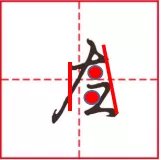
1. Draw horizontally with light strokes;
2. Retract the pen and continue to draw;
3. The writing should be longer;
4. The painting is straight;
5. Collect the pen and draw out the hook;
6. When writing the word "I" in one stroke, you must return to the front and draw the hook at the end.
5. "jin"
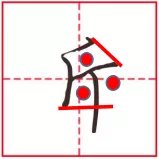
1. Draw lightly and enter the pen lightly;
2. The strokes should be light and connected to the vertical strokes;
3. Pay attention to the short vertical curvature;
4. The horizontal drawing tilts upward to the right;
5. The last vertical painting is the longest;
6. Long and slightly curved.








